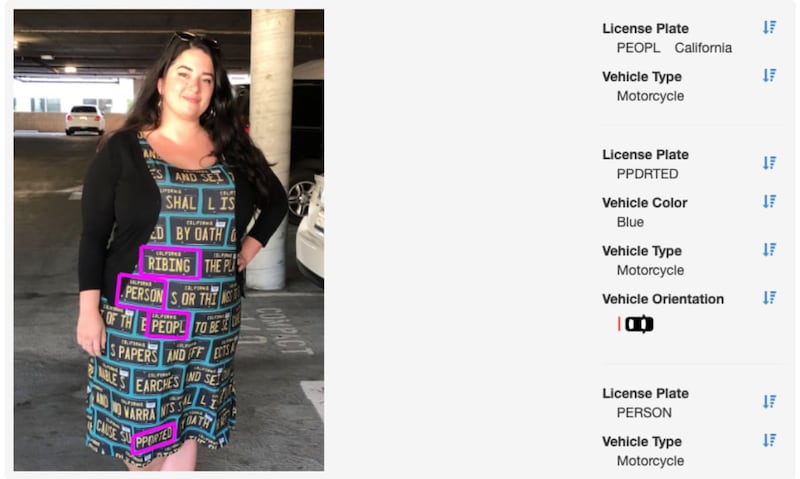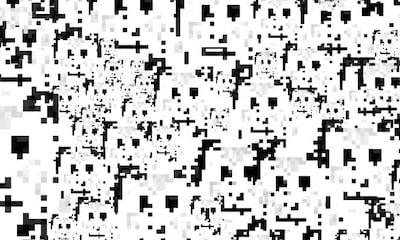Automatic licence-plate readers, which use networked surveillance cameras and simple image recognition to track the movements of cars around a city, may have met their match, in the form of a T-shirt. Or a dress. Or a hoody.
The anti-surveillance garments were revealed at the DefCon cybersecurity conference in Las Vegas by the hacker and fashion designer Kate Rose, who presented the inaugural collection of her Adversarial Fashion line.
Rose credits a conversation with a friend, the Electronic Frontier Foundation researcher Dave Maass, for inspiring the project. "He mentioned that the readers themselves are not very good," she says. "They already read in things like picket fences and other junk. I thought that if they're fooled by a fence, then maybe I could take a crack at it."
To human eyes Rose’s fourth amendment T-shirt contains the words of the fourth amendment to the United States constitution in bold yellow letters. The amendment, which protects Americans from “unreasonable searches and seizures”, has been an important defence against many forms of government surveillance: in 2012, for instance, the US supreme court ruled that it prevented police departments from hiding GPS trackers on cars without a warrant.

But to an automatic licence-plate-reader system the shirt is a collection of car registration plates, and they will get added to the system’s database just like any others it sees. The intention is to make deploying that sort of surveillance less effective, more expensive and harder to use without human oversight, in order to slow down the transition to what Rose calls “visual personally identifying data collection”.
“It’s a highly invasive mass-surveillance system that invades every part of our lives, collecting thousands of plates a minute. But if it’s able to be fooled by fabric, then maybe we shouldn’t have a system that hangs things of great importance on it.”
Rose likens her work to that of other security researchers at DefCon. “If a phone is discovered to have a vulnerability, we don’t throw our phones away. This is like that, disclosing a vulnerability. I was shocked it was so easy, and I would call on people who think these systems are critical to find better ways to do that verification.”

The anti-surveillance fabric is just the latest example of "adversarial fashion", albeit the first to be targeted against car trackers. In 2016 the Berlin-based artist and technologist Adam Harvey worked with Hyphen-Labs to produce the Hyperface textile, fabric printed with a seemingly abstract pattern that a computer would interpret as eyes, mouths and other features, triggering facial-recognition systems.
Harvey aimed to overwhelm and confuse these systems by presenting them with thousands of false hits, so they couldn’t tell which faces were real, as a fight back against intrusive technology. – Guardian











